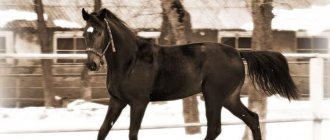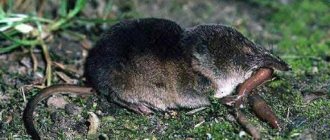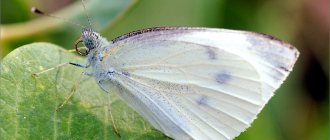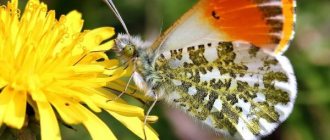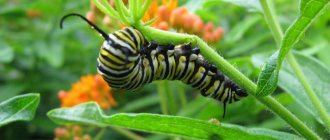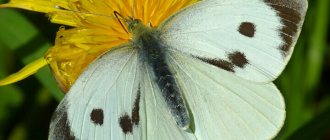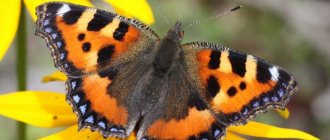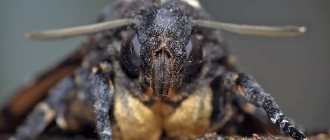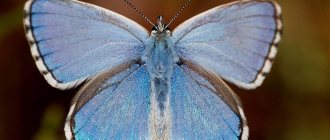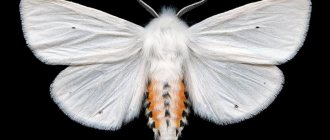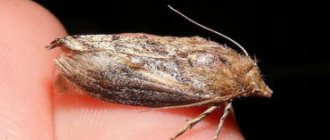American white butterfly - isn't it a beautiful name? This is how one imagines an elegant white-winged insect fluttering around the garden, giving those around him exceptional aesthetic pleasure. No matter how it is, this is still a little-known to our gardeners, but a very dangerous agricultural pest!
The historical homeland of this butterfly, as the name implies, is indeed North America. And the color of its wings is indeed white - that’s all that the vast majority of summer residents will tell you when looking at an incomprehensible insect. Well, you never know how many similar butterflies there are in the garden!
Meanwhile, the time has come to know the new enemy “by sight” - the overseas guest is populating mid-latitude regions at truly enormous speed and is seriously threatening orchards. But first things first.
Description and appearance
The American white butterfly is a member of the bear family. This insect is not large in size, its body length barely reaches 10-16mm. Its wingspan is 25-35 mm. In terms of its structure, the moth is not particularly different from other butterflies. A characteristic feature is the white color of the wings and body with rare black or brown dots. The antennae are dark with a light coating; in males they are comb-like, in females they are thread-like.
The body of the American white butterfly consists of three sections: head, chest, and abdomen. The insect also has three pairs of segmented limbs. The head is inactive, rounded with a slightly flattened nape. The eyes are convex and cylindrical. They occupy most of the lateral surface of the head.
The abdomen of these moths is elongated and cylindrical, covered with light down. In female American white butterflies that have not yet laid eggs, it has a greenish tint.
The pest has two pairs of wings. The rear ones are smaller than the front ones. They are covered with flat scales of various shapes, which are penetrated by transverse and longitudinal veins.
The eggs are greenish, but later acquire a dirty gray tint. The caterpillar larvae of the American butterfly are yellow in color when they appear. In this case, the thoracic region of the head and limbs have a darker shade. On the back of the larva there are 2 rows of small black and yellow warts, which are completely covered with hairs. And on the sides of the body they are located in 4 rows. The length of the larvae reaches 4 cm.
Eggs
Immediately before pupation, the caterpillar of the American butterfly becomes brown, and the warts on its back turn black and on the sides of the body acquire a bright orange hue.
The pupa of this moth is brown with 10-15 blunt bristles at the end. It is enclosed in a gray cocoon, the length of which reaches 1.5 cm. A snow-white imago subsequently emerges from the pupa.
Control
Autumn parasites cause relatively little economic damage to forests,
but can cause significant cosmetic damage to fruit and ornamental trees.
American moth caterpillar colonies are limited to individual branches, making pruning and destruction a viable option in many
cases. However, this is difficult to do in tall trees.
You can often control the parasite by breaking it up with a rake or a strong stream of water from a garden hose. To minimize infestation, spider webs should be destroyed while the caterpillars are still small.
On small trees, web tents can be removed by hand or cut down and destroyed. For heavy infestations, spray thoroughly with pesticides labeled for use against caterpillars, which include carbaryl, diazinon or acetate as soon as small caterpillars are visible, this will stop the growth of caterpillars and their nests.
Adding soap or some other surfactant that can provide better wetting to the silk tent should improve control.
Although American moth caterpillar infestations are rarely serious, it is always important to keep your trees healthy. Water the trees in your yard during dry periods, and avoid injuring the trees or compacting the soil within their drip line. Keeping your trees healthy will help your trees recover from defoliation and other stresses and maintain their appearance year-round.
Lifestyle and habitat
North America is considered the homeland of the American white butterfly, which is why it got its name. In 1940, the pest was accidentally introduced into Hungary. And subsequently it spread to most of Europe and Eurasia.
Its habitat is gradually increasing, since this insect is characterized by increased endurance and is able to fly long distances in a short period of time. Also, the American white butterfly can enter new territories by moving in boxes with contaminated fruit.
The pest is nocturnal, so it has few natural enemies. This insect does not survive severe frosts, so it is not found in northern regions. American butterfly pupae overwinter under the bark of trees, in fallen leaves, clods of earth, cracks in fences, and buildings.
The active years of the American white butterfly begin during the flowering period of apple trees, which usually occurs in the second ten days of May. On the Eurasian continent, two generations of this pest usually develop per season. The second time butterflies begin to fly from mid-July to the end of August.
Pest prevention
Prevention is better than carrying out control measures. Therefore, it is better to start with it.
- Maintaining order. Proper agricultural technology, principles of crop rotation and proximity will help avoid pest infestation.
- Quarantine. In order not to introduce a white butterfly into the site, it is necessary to inspect cargo and goods and carry out disinfection.
- Use traditional methods - hilling, working in the trunk circle, processing row spacing.
- Catching. This includes trapping belts, removing curled leaves and spider web nests.
Life cycle and reproduction
The process of development of the American butterfly embryo in the egg lasts 6-15 days, depending on external factors. After this time, the caterpillar appears. This can only happen under certain conditions: air humidity 50% and temperature not lower than +120C. Otherwise, the larva dies.
American butterfly caterpillars are characterized by increased gluttony. Within a couple of hours after leaving, they begin to actively eat, sweeping away everything in their path. At the same time, they also simultaneously prepare nests for life, where they live for the first 5 weeks.
Having matured, the larvae spread throughout the tree in search of food. This stage of insect development can last 38-57 days. At temperatures above +220C the process accelerates significantly. Nutrition also affects the rate of development of larvae. It accelerates when eating mulberry, walnut, and maple leaves.
Caterpillars
For pupation, future butterflies look for a dry, warm place away from the sun's rays. Therefore, they climb under the bark of trees, into plant litter, and the top layer of soil. After 20 days, sexually mature individuals emerge from the pupae.
The lifespan of females is 11 days, and that of males is 4 days. During this time, they mate and the females lay eggs on the back of the leaves. Females of the first generation are capable of hatching 1.5 thousand eggs throughout their life cycle, and of the second generation – 2.5 thousand.
Where does he live?
As a habitat, individuals choose places protected from dampness and light. They can hide underground, use tree bark, and crevices. A village house with wooden buildings would be a very attractive place for them.
Insects also often hide in warehouses of vegetables and fruits. Often, once in a warehouse, the doll then ends up somewhere else.
The places they use for shelter are also a source of their further spread. This is helped by the ability to move far from the tree on which they lived, 25-30 meters.
Control measures
When the first signs of the American butterfly appear in the garden, urgent measures must be taken to destroy it. It is recommended to use comprehensive control measures.
Mechanical method
First of all, it is necessary to remove the spider nests of caterpillars from the tree and burn them. This procedure must be done regularly at least once a week to prevent mass reproduction of the American white butterfly.
In late autumn, loose areas of bark and fallen leaves under the trees should be removed. All this plant litter must be burned, as the pupae of the American white butterfly can overwinter in it.
Nest
The pest should also be controlled in the spring. At this time, it is necessary to install trapping belts for individuals wintering in the soil. The mechanical method of control also involves collecting the caterpillars of the American white butterfly when they gather in groups after rain or at night.
Biological method
Special biological products that can be used throughout the growing season also help to cope with the problem. These include Bitoxibacillin, Lepidocid.
They are based on viable spores that have a detrimental effect on the pest larvae. After eating the treated leaves, the caterpillars stop moving, turn black and die. The disadvantage of biological products is that they are washed off by rain, and in case of mass reproduction they are not able to eliminate the problem.
Folk remedies
To combat the American butterfly, you can also use folk remedies. One of them is to place barrels filled with water every 10 cm under the affected tree. Black hoses 1.5 m long should be hung along the edges of them. During hot periods, the caterpillars descend to the water and look for a secluded place for pupation , crawl inside the hoses. Subsequently, they need to be retrieved and destroyed.
Also, to combat the pest, you can hang containers half filled with beer on tree branches, as its smell attracts the larvae.
Chemicals
To destroy the American white butterfly, it is necessary to use chemicals. It is recommended to spray trees with them before flowering begins and after it, as well as during the period of fruit formation, but taking into account the waiting period before harvesting.
Effective remedies against this pest:
- Chlorophos;
- Sevin;
- Dursban 480;
- Rogor S;
- Entobacterin;
- Karate 050EC;
- Pirinex 40.
What harm does the American butterfly cause?
Biologists note that all plants damaged by the American white butterfly can be divided into 3 large groups:
- “Favorites”: apple, plum, cherry, quince, ash. They become victims of pests most often.
- Providing butterflies with a full cycle of transformation: deciduous (shrubs and trees).
- Unable to provide a full cycle: coniferous trees and grasses. They are attacked only by already grown caterpillars.
Thus, most plants grown by humans may be at risk.
The damage to plants caused by the American white butterfly is as follows:
- The destruction of plant leaves by caterpillars, which, of course, causes irreparable harm to it. Young caterpillars eat the fleshy part, rich in juice, leaving a kind of skeleton of veins. Grown-up individuals are able to cope with it without leaving a trace of the leaves. This process continues until autumn.
- The plant cannot develop normally. Its appearance suffers, and productivity is significantly reduced. If measures are not taken to combat the American white butterfly, it may even die.
- Caterpillars tend to live in colonies. Gathering in heaps, they entwine the branches of trees and bushes with cobwebs. When neglected, such a halo completely surrounds the plant.
- Plantings attacked by the American butterfly are very weak. They hardly survive frosts.
Of course, one cannot fail to mention the amazing speed of spread of the American butterfly. If it appears on the site, then soon all nearby areas in the area will become infected.
Parasitic butterflies that appear in cereals
The larvae of food Indian moths, granary moths and flour moths often settle in household cereal stocks. Externally, the moths resemble ordinary clothes moths, which eat woolen items. Over the course of 2 weeks, the female lays about 500 small eggs. After a few weeks, grayish-white larvae emerge from them, feeding on cereals.
Advice! A moth-infested product can be brought from a supermarket, because the larvae easily eat through cardboard and paper packaging. When cleaning kitchen cabinets, use a vacuum cleaner that will pull out moths even from deep cracks. Treat dishes and cereal containers with a vinegar solution. Sticky pheromone traps can be placed on slower male moths.
